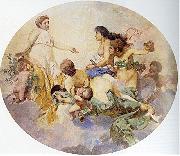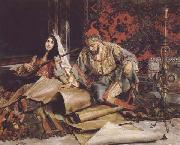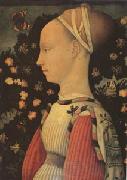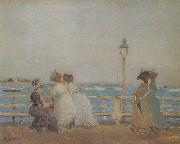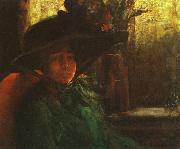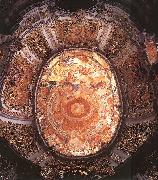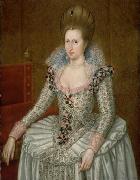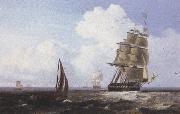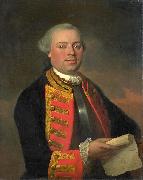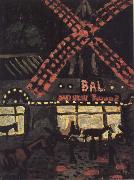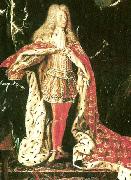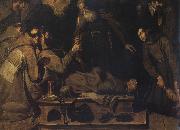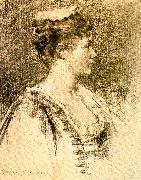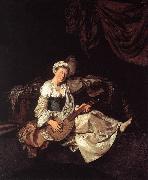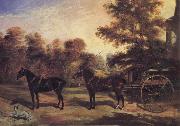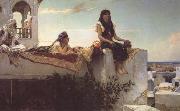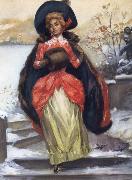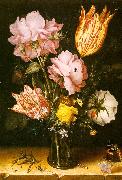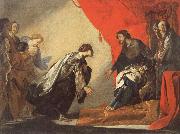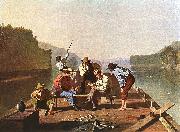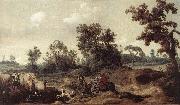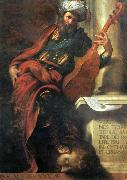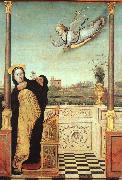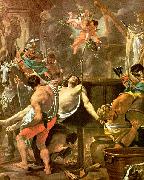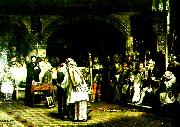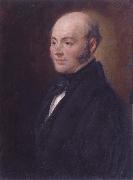|
|
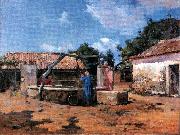 |
Antonio Carvalho de Silva Porto
|
|
(Porto, 11 November 1850 - Porto, 11 June 1893) was a Portuguese naturalist painter.
Born in Porto, he studied there under João Antenio Correia and T. Furtado, then continued his studies in Paris and Rome.
While in Paris he exhibited his work in the Salon and in the World´s Fair of 1878. In Paris, he studied with his friend João Marques de Oliveira, where they were pupils of Adolphe Yvon and Alexandre Cabanel. They became followers of the naturalist Barbizon School, and brought the new school of painting to Portugal, when they returned in 1879.
Silva Porto become one of the most acclaimed naturalist painters of his generation, showing the heritage of Jean-Baptiste Camille Corot and Charles-François Daubigny. Secondary effects from impressionism can sometimes be found in his paintings.
|
|
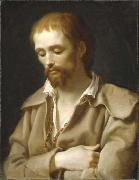 |
Antonio Cavallucci
|
|
(21 August 1752 - 18 November 1795) was an Italian painter of the late Baroque.
Cavallucci was born in Sermoneta in the Lazio. His artistic talents were recognized in an early stage by Francesco Caetani, Duke of Sermoneta in 1738-1810. In 1765, he brought the 13 year old Cavallucci to Rome, where he became a pupil of Stefano Pozzi and three years later of Gaetano Lapis. He also studied drawing at the Accademia di San Luca (c. 1769-1771).
His earliest work dates from the mid-1760s. It is a tempera frieze in the Casa Cavallucci in Sermoneta. His first portrait was of his benefactor Duke Francesco Caetani. This portrait is only preserved as an engraving in 1772 by Pietro Leone Bombelli (1737-1809).
His first major commission was the decoration of five audience chambers in the Caetani Palace in Rome in 1776. He painted mythological scenes and allegories appropriate for each room.
In the early 1780s he painted mostly portraits, such as those of Francesco Caetani and Teresa Corsini, Duchess of Sermoneta.
The Origin of Music (1786) is probably the most important painting of his mid-career. It was based on the illustrations in the book Iconologia (1593) from Cesare Ripa.
The commissions kept coming under his new patron, Cardinal Romualdo Braschi-Onesti (1753-1817), nephew of the pope Pius VI. He has painted the portraits of his new benefactor and of the pope in 1788.
He was inducted into the Accademia di San Luca in 1786, Academy of Arcadia in 1788, and the Congregazione dei Virtuosi al Pantheon in 1788.
He is said to have painted St Benedict Joseph Labre while the saint was in ecstasy, or (as is perhaps more plausible), having seen the saint in ecstasy, to have brought him to his studio and painted his portrait there. In later years he worked for Cardinal Francesco Saverio Zelada, decorating his titular church San Martino ai Monti in Rome. Cavallucci died in Rome in 1795.
He was influenced by Pompeo Batoni and Anton Raphael Mengs. There is in his art some of the northern European feeling that had made its way into Rome at the end of the eighteenth century. The Portuguese painter Domingos Sequeira was one of his pupils.
|
|
|
|
 |
Antonio Ciseri
|
|
(October 25, 1821 - March 8, 1891) was a Swiss painter of religious subjects.
Ciseri was born in Ronco sopra Ascona in the canton of Ticino in Switzerland. In 1833 he moved with his father to Florence. He was admitted in 1834 to the Accademia di Belle Arti, where he trained under Niccola Benvenuti. In 1849, he began offering instruction to young painters, and eventually ran a private art school. Among his earliest students was Silvestro Lega.
Ciseri's religious paintings are Raphaelesque in their compositional outlines and their polished surfaces, but are nearly photographic in effect. He fulfilled many important commissions from churches in Italy and Switzerland. Ciseri also painted a significant number of portraits. He died in Florence on March 8, 1891.
|
|
|
|
|
|
|
|
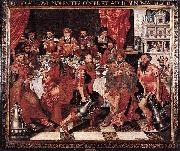 |
Antoon Claeissens
|
|
(his name is given in many varieties, with his first name rendered as Anton, Anthonie, Anthony, Anthuenis, and his surname as Claes, Claesz, Claeis, Claeiss, Claessens and Claeissins), the son of Pieter Claes the elder, painted historical and allegorical subjects, and portraits. He was a native of Bruges, and there entered the Guild of St. Luke in 1575, and became its dean in 1586, 1590, and 1601. He died in 1613. His works, several of which are in the Hôtel-de-Ville and churches of Bruges, are distinguished by their fine colouring and finish. In the H6tel-de-Ville is a 'Grand Banquet' with many portraits of magistrates of the time, dated 1574.
His son, Pieter Anthonie, was dean of the Guild of St. Luke at Bruges in 1607, and died in 1608.
|
|
|
|
|
|
|
|
|
|
|
|
|
|
|
|
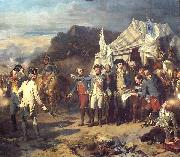 |
Auguste Couder
|
|
(1 April 1790 in Paris - 21 July 1873 in Paris) was a French painter and student of Jean-Baptiste Regnault and Jacques Louis David. He joined the Academie des beaux-arts in 1839 and was an officer of the Legion d'honneur. He married Cornelie Stouf, daughter of the sculptor Jean-Baptiste Stouf.
Couder was buried in the cemetery of Pere-Lachaise.
|
|
|
|
|
|
|
|
|
|
 |
Bartolomeo Caporali
|
|
(c. 1420-c. 1505 ; active 1454-1499) was an Italian painter born and active in Perugia. He painted a Madonna and Saints (1487) for the church of Santa Maria Maddalena at Castiglione del Lago.
|
|
|
|
 |
Beaux, Cecilia
|
|
Studied under Bouguereau and Tony Robert-Fleury.
Specializes in Portraits.
American Painter, 1855-1942
|
|
|
|
|
|
|
|
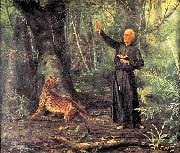 |
Benedito Calixto
|
|
(14 October 1853 -- 31 May 1927) was a Brazilian painter. His works usually depicted figures from Brazil and Brazilian culture, including a famous portrait of the bandeirante Domingos Jorge Velho in 1923, and scenes from the coastline of São Paulo. Unlike many artists of the time, Calixto's patron was an individual other than the state, who were "the most dependable source of patronage." |
|
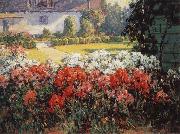 |
Benjamin C.Brown
|
|
American,is best remembered for his Impressionist renderings of the Sierra Mountains and poppy-filled spring meadows.1865-1942 |
|
|
|
 |
Benjamin Champney
|
|
(November 20, 1817 - December 11, 1907) was a painter whose name has become synonymous with White Mountain art of the 19th century. He began his training as a lithographer under celebrated marine artist Fitz Henry Lane at Pendleton's Lithography shop in Boston. Most art historians consider him the founder of the "North Conway Colony" of painters who came to North Conway, New Hampshire and the surrounding area during the second half of the 19th century. His paintings were often used to make chromolithographs that were subsequently sold to tourists who could not afford Champney's originals. He exhibited regularly at the Boston Athenæum and was a founder of the Boston Art Club
|
|
|
|
|
|
|
|
|
|
|
|
|
|
|
|
|
|
|
|
|
|
|
|
 |
c. a. dahlstrom
|
|
Carl Petter Dahlström, född ca 1705, död 4 mars 1794, var en svensk möbelsnickare. Dahlström gesällvandrade 1745?C1755 i Nordeuropa och Frankrike, där han i Paris kom i lära hos den tidens främste ebenist Jean-François Oeben. Hos denne lärde sig Dahlström faneringstekniken marqueterie ?? fleurs eller blomsterintarsia, som var en metod för att möta rokokons krav på fanering av dubbelvälvda kroppar. Mycket tack vare rekommendationer av C.J. Cronstedt blev Dahlström efter hemkomsten till Sverige utnämnd till kunglig ebenist den 19 november 1756. Han finns representerad på Nationalmuseum med en byrå som han tillverkade tillsammans med Lorentz Nordin. Dahlström överlämnade 1769 sina privilegier till Niclas Palmgren och ägnade sig därefter åt restaurangverksamhet. |
|
|
|
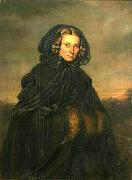 |
C. Grunewald
|
|
paint Portrait of Bertha Wehnert-Beckmann German photographer in 1858 |
|
|
|
|
|
|
|
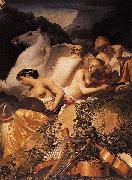 |
Caesar van Everdingen
|
|
(1616/17, Alkmaar - buried October 13, 1678, Alkmaar), older brother of Allart van Everdingen and Jan van Everdingen, was a Dutch Golden Age portrait painter.
Caesar Pietersz van Everdingen also known as Caesar Boetius van Everdingen was educated in Utrecht, where he learned to paint from Jan Gerritsz van Bronckhorst.Caesar became a member of the painter's guild in Alkmaar in 1632. His first known painting dates from 1636. In 1648 he moved to Haarlem, where he joined the Haarlem Guild of St. Luke and the civic guard (or schutterij) there, where he met Jacob van Campen. From 1648 to 1650 He helped him with the decoration of the Oranje Zaal (Orange room) in Huis ten Bosch. In 1658 he moved back to Alkmaar where he started a workshop and took on pupils.
Many of his pictures are to be seen in the museums and private houses of the Netherlands. His pupils were Jan Theunisz Blanckerhoff, Adriaen Dekker, Hendrik Graauw, and Thomas Heeremans.Houbraken also lists two other pupils; Adriaen Warmenhuizen, and Laurens Oosthoorn.
|
|
|
|
|
|











